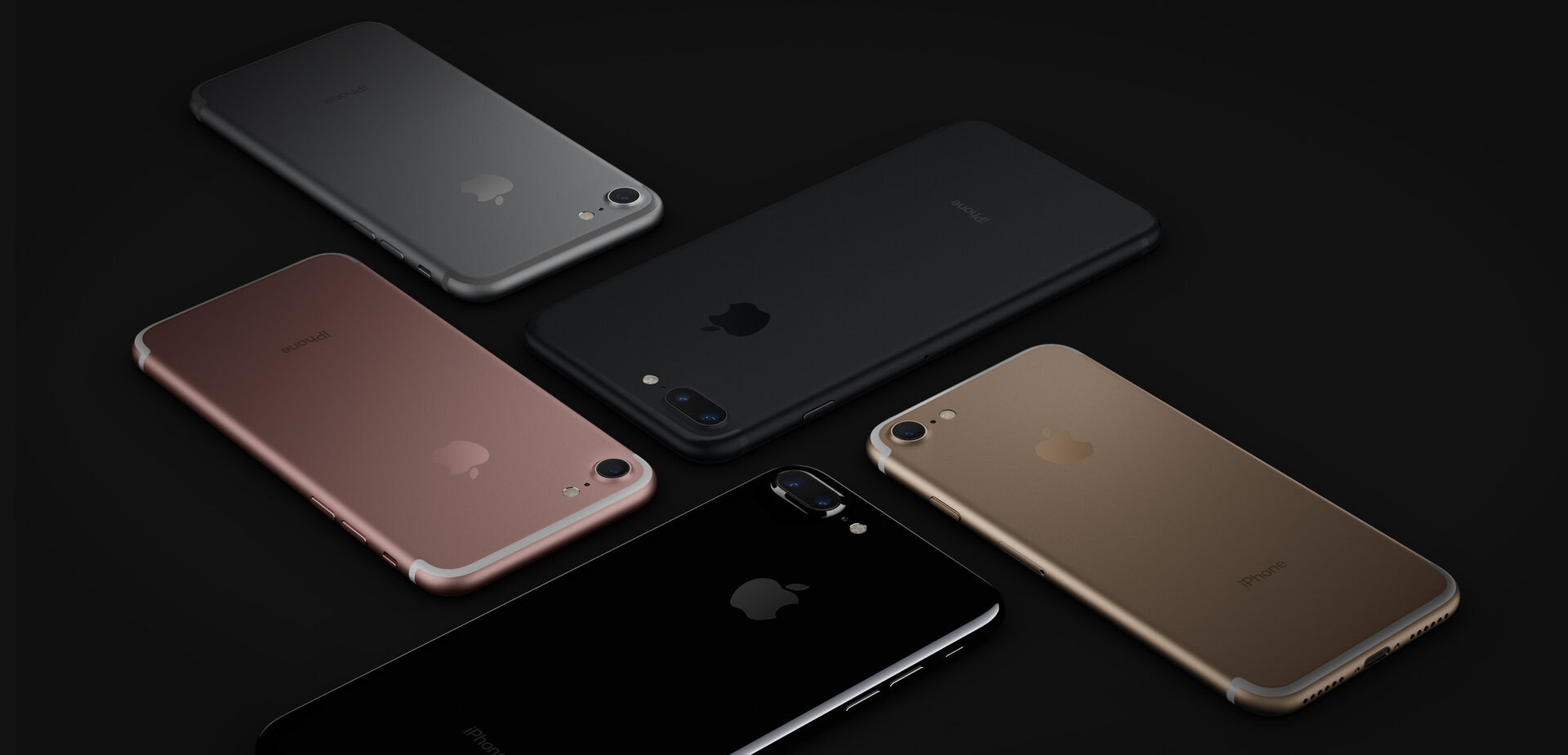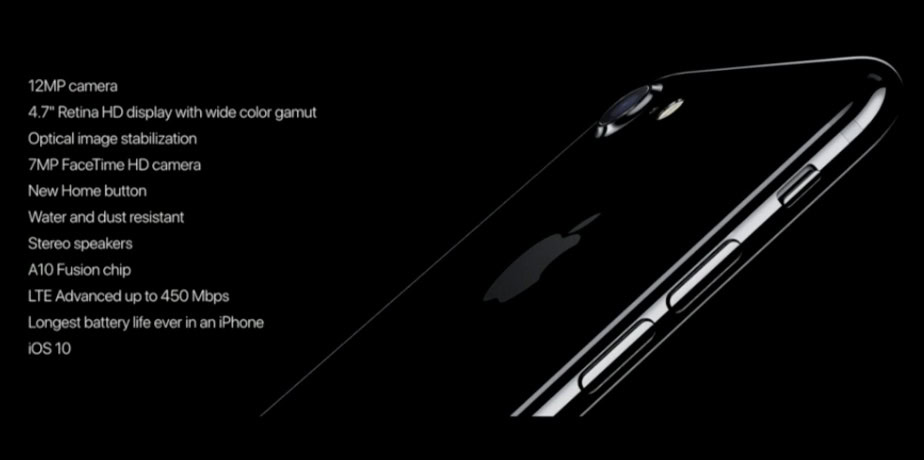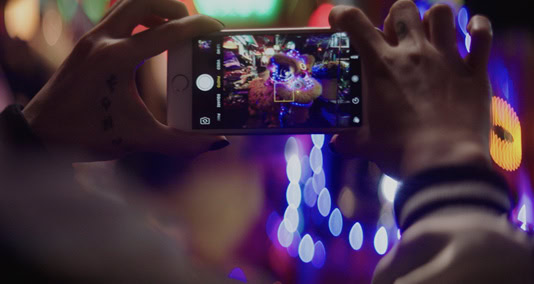Affiliate links on Android Authority may earn us a commission. Learn more.
iPhone 7 vs the Android competition
Published onSeptember 9, 2016

The last month or so has been an exciting time for Android enthusiasts, what with the launch of the Galaxy Note 7, LG V20 and others, and now it’s Apple turn to release its latest flagships, the iPhone 7 and 7 Plus. The two new smartphones don’t mark a major departure from Apple’s long running design philosophy, but they are packing in some new features that might please fans old and new. So let’s see how these new handsets track up against the best of Android.
Starting with the processing package, Apple is boasting another big leap in performance with its new A10 processor, much as Android manufacturers did at the start of the year with the arrival of the Qualcomm Snapdragon 820. CPU core count has typically shrunk back to four cores in Android flagships this year, due Qualcomm’s new Kryo CPUs, and Apple has now hopped onto the trend with its first quad-core A10 Fusion.
The A10 moves from a basic dual-core setup to a more familiar heterogeneous design, with two high performance cores for the heavy lifting and two low performance cores to save on energy for background tasks. Apple didn’t mention anything about clock speeds, but it did say that the two energy efficient cores consume just a fifth of the power of the high performance cores. Apple says that performance is up to 40 percent higher than its last generation A9 chip, so it’s highly competitive.
| iPhone 7 / 7 Plus | Galaxy S7 / S7 edge | Xperia XZ | HTC 10 | Moto Z Force | |
|---|---|---|---|---|---|
Display | iPhone 7 / 7 Plus 4.7 / 5.5-inch LCD (1334x750 / 1920x1080) | Galaxy S7 / S7 edge 5.1 / 5.5-inch QHD AMOLED (2560x1400) | Xperia XZ 5.2-inch FullHD LCD (1920x1080) | HTC 10 5.2-inch QHD LCD (2560x1440) | Moto Z Force 5.5-inch QHD AMOLED (2560x1440) |
SoC | iPhone 7 / 7 Plus Apple A10 Fusion | Galaxy S7 / S7 edge Exynos 8890 or Snapdragon 820 | Xperia XZ Snapdragon 820 | HTC 10 Snapdragon 820 | Moto Z Force Snapdragon 820 |
CPU | iPhone 7 / 7 Plus 2x high performance 2x low performance | Galaxy S7 / S7 edge 4x 2.3GHz Samsung M1 + 4x 1.6GHz Cortex-A53 or 4x 2.15GHz Kryo | Xperia XZ 4x 2.15GHz Kryo | HTC 10 4x 2.15GHz Kryo | Moto Z Force 4x 2.15GHz Kryo |
GPU | iPhone 7 / 7 Plus | Galaxy S7 / S7 edge Mali-T880 MP12 or Adreno 530 | Xperia XZ Adreno 530 | HTC 10 Adreno 530 | Moto Z Force Adreno 530 |
RAM | iPhone 7 / 7 Plus 2GB (est) | Galaxy S7 / S7 edge 4GB | Xperia XZ 3GB | HTC 10 4GB | Moto Z Force 4GB |
Storage | iPhone 7 / 7 Plus 32 / 128 / 256GB | Galaxy S7 / S7 edge 32 / 64GB | Xperia XZ 32 / 64GB | HTC 10 32 / 64GB | Moto Z Force 32 / 64GB |
MicroSD? | iPhone 7 / 7 Plus No | Galaxy S7 / S7 edge Yes | Xperia XZ Yes | HTC 10 Yes | Moto Z Force Yes |
Some pre-release benchmarks for the phone suggest a similar performance differential to Android handsets that we’ve seen in the past. The A10 looks to continue to score superior single core performance results, but lags behind in multi-core scenarios, as you would expect. Either way, performance won’t be sluggish on any handsets packing the latest processing technology. Apple didn’t mention anything about a boost to RAM, so we’re likely still looking at just 2GB inside both models, which is half of what you can find in a typical Android flagship. Some Chinese handsets now pack in a whopping 6GB of RAM, although that is admittedly overkill. iOS is often touted as being lean, but more demanding applications would probably have appreciated some extra memory.
When it comes to display technology, not much appears to have changed with this generation of iPhones, Retina remains the standard. LCD technology appears across both models, which doesn’t match the vibrancy or viewing angles of modern AMOLED technology. The 4.7-inch 1334×750 and 5.5-inch 1080p panels in the iPhone offer acceptable pixel densities, but these panels won’t appear quite as sharp as the QHD panels found in most of today’s Android flagships, with Sony’s Xperia XZ being an obvious exception.
Apple boasts about better colors with its new Cinema P3 color gamut support, but Samsung’s Super AMOLED has improved over the years too, as have Sony’s LCD Triluminos and LG’s IPS Quantum technologies. We’ll have to go hands on for a more direct color quality comparison (and we have one planned so stay tuned).

All of this tech inside the new iPhone 7 is powered by a battery that lasts up to two times longer than the 6S, while the 7 Plus receives an extra hour. Apple didn’t give us an exact cell size, but it’s likely that it remains around the same size as before, 1715mAh in the small model and 2750mAh in the Plus model. Instead, most of the power savings are likely coming from the new processor design. These batteries are therefore likely to still be substantially smaller than your typical Android flagship, which usually exceeds 3,000mAh. Even if Apple manages to keep idle power consumption to a minimum, heavy users will likely still be fighting for a wall outlet before the day is done.
Despite what some rumors suggested, there is no wireless charging technology built into the new iPhones. This leave Samsung’s Galaxy series as the go-to range if you’re looking for wireless power capabilities out of the box.
One of the biggest changes with the new iPhone is the introduction of dual rear camera technology, but only for the larger 7 Plus model. This design uses one wide angle and one telephoto lens to allow for the equivalent of a 2x optical zoom, which might come in handy for some pictures. Meanwhile, the smaller iPhone 7 sticks with a familiar 12 megapixel shooter. The cameras not both also feature a wider f/1.8 aperture for additional light capture, which matches up with many leading Android models. Apple has also bundled in Optical Image Stablization, a feature we’re familiar with in many top quality Android cameras, such as the Galaxy S7 series and the HTC10.

On the Android side, dual cameras are still not a common piece of technology, despite being around for a few generations now. That said, you can find dual rear camera configurations with the LG G5, LG V20, and the HUAWEI P9, to name a few. However, these setups are a little different to Apple’s design. Apple has also introduced a software background focusing mode and support RAW output for those who want more control when editing their phones, both features that have been readily available in the Android space for a generation or two now.
For front facing cameras, the standard seems to still be stuck around 5 megapixels on most Android flagships. However, there are exceptions, such as Sony’s new phones and other selfie oriented Android handsets that have stuck higher resolution sensors on the front. The new LG V20 also features a wide angle front facing camera, to help squeeze more into your selfies. Apple has bumped this up to a 7 megapixel sensor in its iPhone 7, which should produce slightly sharper selfies.
When it comes to extra features, there’s a growing set of distinct features not only between iOS and Android, but between Android manufacturers as well. Apple remains focused on its 3DTouch technology for additional display commands, along with a new pressure sensitive home button, and a new IP67 rating.
| iPhone 7 / 7 Plus | Galaxy S7 / S7 edge | Xperia XZ | HTC 10 | Moto Z Force | |
|---|---|---|---|---|---|
Cameras | iPhone 7 / 7 Plus 12MP / 2x 12MP f/1.8 rear with OIS 7MP f/2.2 front | Galaxy S7 / S7 edge 12MP f/1.7 rear with OIS & PDAF 5MP f/1.7 front | Xperia XZ 21MP f/2.0 rear with laser & PDAF 13MP f/2.0 front | HTC 10 12MP f/1.8 rear, with OIS & laser AF 5MP f/1,8 front with OIS | Moto Z Force 21MP f/1.8 rear with laser & PDAF, OIS 5MP f/2.2 front |
Battery | iPhone 7 / 7 Plus 1715 / 2750mAh (est) | Galaxy S7 / S7 edge 3,000mAh | Xperia XZ 2,900mAh | HTC 10 3,000mAh | Moto Z Force 3,500mAh |
NFC | iPhone 7 / 7 Plus Yes | Galaxy S7 / S7 edge Yes | Xperia XZ Yes | HTC 10 Yes | Moto Z Force Yes |
Fingerprint | iPhone 7 / 7 Plus Yes | Galaxy S7 / S7 edge Yes | Xperia XZ Yes | HTC 10 Yes | Moto Z Force Yes |
Fast Charge | iPhone 7 / 7 Plus No | Galaxy S7 / S7 edge Yes | Xperia XZ Quick Charge 3.0 | HTC 10 Quick Charge 3.0 | Moto Z Force Yes |
IP Rating | iPhone 7 / 7 Plus IP67 | Galaxy S7 / S7 edge IP68 | Xperia XZ IP68 | HTC 10 No | Moto Z Force No |
3.5mm audio | iPhone 7 / 7 Plus No | Galaxy S7 / S7 edge Yes | Xperia XZ Yes | HTC 10 Yes | Moto Z Force No |
Extras | iPhone 7 / 7 Plus Lightning Port, 3DTouch | Galaxy S7 / S7 edge Wireless Charging, Samsung Pay | Xperia XZ USB Type-C | HTC 10 USB Type-C | Moto Z Force USB Type-C, Shatterproof display |
OS | iPhone 7 / 7 Plus iOS 10 | Galaxy S7 / S7 edge Android 6.0 | Xperia XZ Android 6.0 | HTC 10 Android 6.0 | Moto Z Force Android 6.0 |
The IP67 means the the iPhone 7 series can survive splashes of water and full submersion for up to 1 meter for up to 30 minutes. This doesn’t quite match up to the IP68 ratings of the Samsung Galaxy S7, S7 edge or Note 7, nor the Sony Xperia XZ or Xperia X, which boast protection from water submersion for up to one hour. However, all of these rating offers an air tight seal against dust.
Apple stubbornly refuses to adopt USB Type-C, and instead opts for its own Lightning Port once again. However, this time the port is also required for audio, as well as data and charging. The iPhone 7 and 7 Plus do away with the 3.5mm headphone jack, which is bound to cause controversy, as have a small number of Android manufactures. Although the company is throwing an adaptor into the box. LeEco was one of the first, but now even Lenovo’s new Moto Z series abandons the old standard in favour of wireless or USB Type-C headphones.
For security, fingerprint scanners are now common across the board, although Samsung has further upped its game with the inclusion of iris scanning technology in the larger Galaxy Note 7. All top end phones now also support mobile payments over NFC, either through Apple Pay, Android Pay, or apps offered directly from banks. However, Samsung Pay is still superior in terms of compatibility, thanks to its support for magnetic strip readers as well as NFC.
If you’re looking for manufacturers that are really pushing the boat in terms of innovation, then perhaps the modular designs of the LG G5 and the Moto Z Force and Moto Z Play are worth a look. As well as matching competitors on the basic hardware, these modular smartphones allow for superior customization and augmentation of features such as the camera or audio playback.
[related_videos align=”center” type=”custom” videos=”714781,690300,709619,680806″]
Overall, the new iPhone 7 and 7 Plus show the similar incremental improvements that have been appearing in the Android space this year. Apple can’t really claim to be at the cutting edge any more when it comes to many pieces of mobile hardware, but the new camera setup is certainly intriguing. Meanwhile the rest of the new iPhone’s design plays it safe enough to keep existing fans happy.
Processors are more powerful, cameras boasts slightly better low light performance, and across the market there are a few nice little extras on board no matter where you look. Ultimately, consumer preferences for operating systems, a certain design, or specific features will probably hold more weight than gigahertz and megapixels, and there are plenty of excellent choices to be had right now.